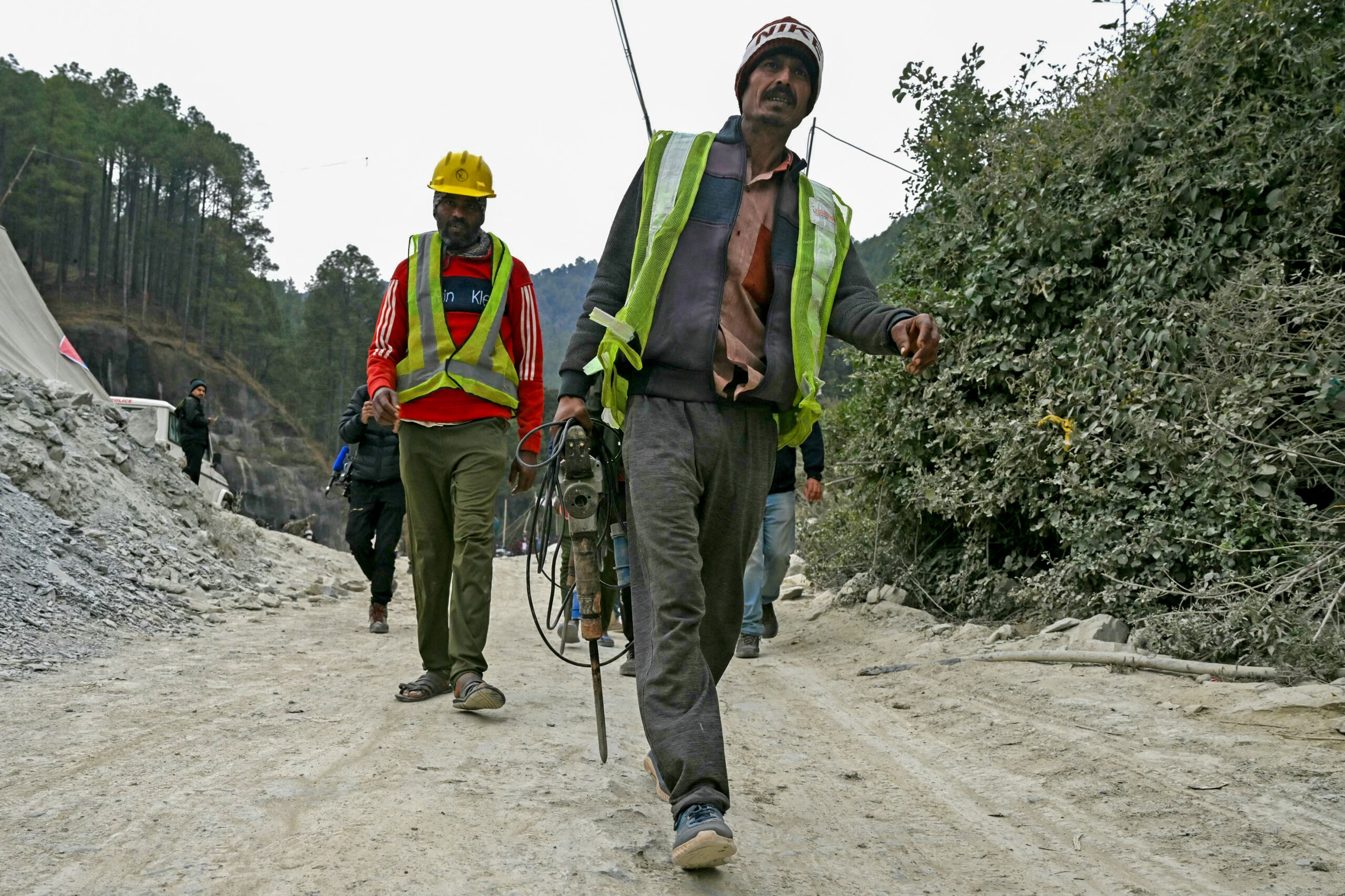
Manual drilling at the tunnel started after the auger machine broke down. AFP
A mining practice banned for being unsafe has come to the aid of the 41 workers trapped inside an Uttarakhand tunnel after high-tech, imported machines broke down during the long-drawn operation.
Rat-hole mining to rescue the trapped workers began yesterday after a 25-tonne auger machine failed in the last leg of the challenging operation. This method of manual drilling has made quick progress and the diggers are now metres away from the workers who have been confined for 17 days.
What Is Rat-Hole Mining?
Rat-hole mining is a method of extracting coal by digging very small pits, not more than 4 feet wide. Once the miners reach the coal seam, tunnels are made sideways to extract the coal. The coal brought out is dumped nearby and later transported via highways. In rat-hole mining, workers enter the mines and use hand-held tools to dig. This is the most common method of mining in Meghalaya, where the coal seam is very thin and any other method risks being economically unviable. The small size of the tunnels make children the best fit for the hazardous job, and in a state that has limited options for livelihood, many line up for the risky job. Many children also pose as adults to get work in such mines.
Why Was Rat-Hole Mining Banned?
The National Green Tribunal banned rat-hole mining in 2014 for being unscientific, but the practice continues to be rampant. Several accidents have resulted in deaths of rat-hole miners in the Northeastern state. In 2018, 15 men involved in illegal mining were trapped inside a flooded mine. Only two bodies could be recovered in the course of the rescue operation that lasted for more than two months. Another such accident took place in 2021 when five miners were trapped in a flooded mine. Three bodies were found before rescue teams called off the operation after a month. Add to this the environmental pollution caused by this method.
Mining, however, is a key source of revenue for the state government. The Manipur government has challenged the NGT ban, arguing that there is no other feasible mining option for the region. A panel appointed by Meghalaya High Court in 2022 found rat-hole mining continues unabated in Meghalaya.
The Uttarakhand Operation
The outlawed practice has now come to the rescue of the trapped workers after an American auger machine failed to cut through the debris blocking their escape. Two teams of specialists, a total of 12 men, have been flown in from Delhi for this task. The Uttarakhand government’s nodal officer Neeraj Khairwal, however, clarified that the men brought in were not rat-hole miners but experts in the technique.
Rajput Rai, one of the experts, told news agency PTI that one man does the drilling, another collects the rubble and the third places it on a trolley to be pulled out.
The specialists have been at work inside the 800 mm pipe to remove the debris manually using hand-held tools. One of the specialists told news agency ANI yesterday, “A shovel and other specialist tools will be used. For oxygen, we will take a blower with us.”
This form of drilling is a tiring task, and the diggers are taking turns. According to rescue teams, these professionals are skilled in cutting through metal barriers too.




